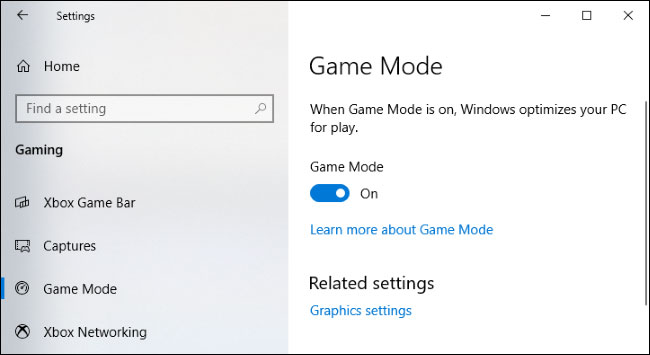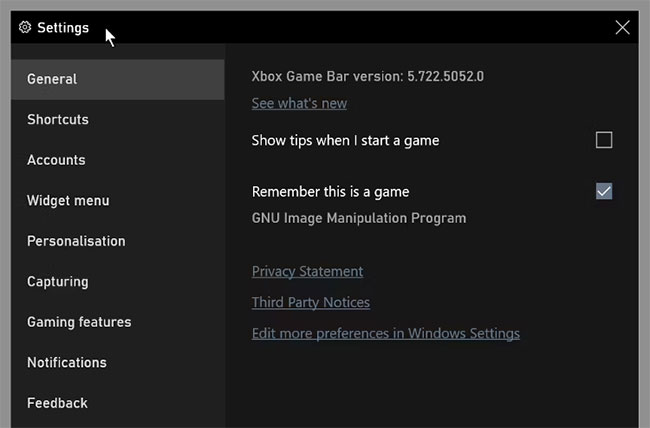Everything about Game Mode on Windows
With a few clicks in the Game Bar settings, it can also be used to increase the performance of other applications.
If you're interested in giving your apps, games, or something else a performance boost, here's how to use Game Mode to get there.
What is Game Mode?
First introduced in Windows 10 Creators Update (released in April 2017), 'Game Mode' is a feature developed to help improve the performance of games when they are launched on Windows 10 PCs .
Microsoft says that Game Mode 'helps achieve more stable frame rates depending on the specific game and system configuration'.
Technically, Game Mode works by identifying specific games and giving them priority access to your computer's resources. Thanks to that, the game you are focusing on will be 'pumped' with more CPU and GPU resources, while other applications and background processes receive fewer resources. Of course, this only happens in case the system recognizes that you are playing a specific game.
Explaining the limitations of Game Mode, Microsoft said that in this mode, Windows Update will not automatically install hardware drivers or notify you to restart your PC while playing games. This should reduce disruption, at least in theory.
Does Game Mode help increase performance?

Game Mode may or may not increase gaming performance on your Windows 10 PC. Depending on the game type, PC hardware configuration, and tasks running in the background, you may see a noticeable improvement, a negligible improvement, or no difference at all.
You'll see the biggest performance boost when the game is competing for system resources with other programs running in the background. If your PC has ample CPU and GPU resources, Game Mode may provide a negligible improvement.
A 2017 test from PC Gamer showed that Game Mode helped slightly increase game performance on PC systems with not too high configuration. However, this comes with background tasks — when Game Mode is enabled, it won't work properly. It's a trade-off — while playing a game, resources for background tasks are taken away from the game.
Game Mode is designed to improve the gaming performance of less capable computers. But that doesn't mean it will turn your 10-year-old laptop with integrated graphics chip into a "monster" gaming machine. If you have a powerful PC, turning on Game Mode won't make a difference in making games run better.
Why is Game Mode enabled by default?
Game Mode will try to automatically detect when you are playing a game, and from there take actions appropriate to the specific situation. So if you almost exclusively use web browsers and office software all day, Game Mode won't have any impact at all.
However, when you launch a game, Game Mode will take effect and immediately prioritize system resource mobilization for that game. In other words, this feature has absolutely no effect unless the system recognizes that you are running a game.
Game Mode can sometimes cause problems
Some Windows users have reported that some games actually experience reduced performance when Game Mode is enabled. This may sound strange, but it is not without basis.
For example, in May 2020, Guru 3D reported on Game Mode leading to stuttering, lag, and screen freezing with both NVIDIA and AMD graphics hardware setups.
Why does this phenomenon occur? No official conclusion has been made yet. However, according to experts, in the process of allocating more hardware resources to a PC game and stripping away background tasks, Game Mode can theoretically take away resources from background tasks. important background service. This can cause system errors or slow down the game. Windows is complicated.
Either way, if you encounter strange issues — freezes, freezes, or low FPS — while playing PC games, try turning off Game Mode to see if the problem is resolved.
How to turn Game Mode on and off on Windows 10
To control Game Mode on Windows 10, open the Settings window from the Start menu or by pressing Windows + I . Go to Settings > Gaming > Game Mode .
Here, you will find only one setting option: Turn Game Mode on or off.
As said, this mode is enabled by default. If you want to turn it off, just click the switch and turn it back to ' Off '.

Similar to Windows 10, Windows 11 also comes with 'Game Mode' enabled by default. If you want to turn off Game Mode on Windows 11, you can follow this guide.
How to apply Game Mode to any Windows application
You can apply Game Mode to almost any application in Windows. Performance increases will vary between applications, as well as between different computers.
1. Open the app you want to apply Game Mode to. Make sure it's selected if you have multiple apps open.
2. Now, open Windows Game Bar from the main application menu or by pressing the Windows Key + G keyboard shortcut .
3. Some Game Bar widgets will be active. Click the Settings button in the toolbar at the top.
4. Click on the General settings tab and find the Remember this is a game option .
5. Check the box next to this option. Make sure that the app you want to apply Game Mode to is displayed below it.

From now on, every time that application is launched, Windows will recognize it as a game. Game Mode's resource boosting capabilities will then be applied, hopefully improving application performance.
How to turn off Game Mode for applications
As mentioned previously, the performance increase you see will depend on a number of factors. If you notice a drop in performance, you can prevent Game Mode from recognizing other apps as games.
To turn off Game Mode for a specific app, you can repeat the steps above. Then uncheck the box next to Remember this is a game . It's important to make sure that the app you applied Game Mode to is open and selected. If you have applied Game Mode to several applications, open each application in turn and repeat the process to turn off Game Mode.
Of course, you can simply turn off Game Mode in the main settings. This is an easier option if you don't see improved performance in games or other applications. Just note that if you turn Game Mode back on, Windows will still recognize any application you assigned Game Mode to as a game.
You should read it
- Instructions for activating Game Mode on Windows 10
- How to fix the error does not activate Game Mode Windows 10
- 10 hidden modes in Windows and how to use them
- How to enable Game Mode on Windows 10
- Instructions for activating and using Game Tools mode on Samsung
- Among Us: The interesting game modes in the game
 How to transfer free space from one partition to another in Windows 10
How to transfer free space from one partition to another in Windows 10 7 best equalizer software for Windows 10 to improve PC sound
7 best equalizer software for Windows 10 to improve PC sound What is VPN? Advantages and disadvantages of VPN virtual private network
What is VPN? Advantages and disadvantages of VPN virtual private network Top 12 free Windows drive partition management software
Top 12 free Windows drive partition management software